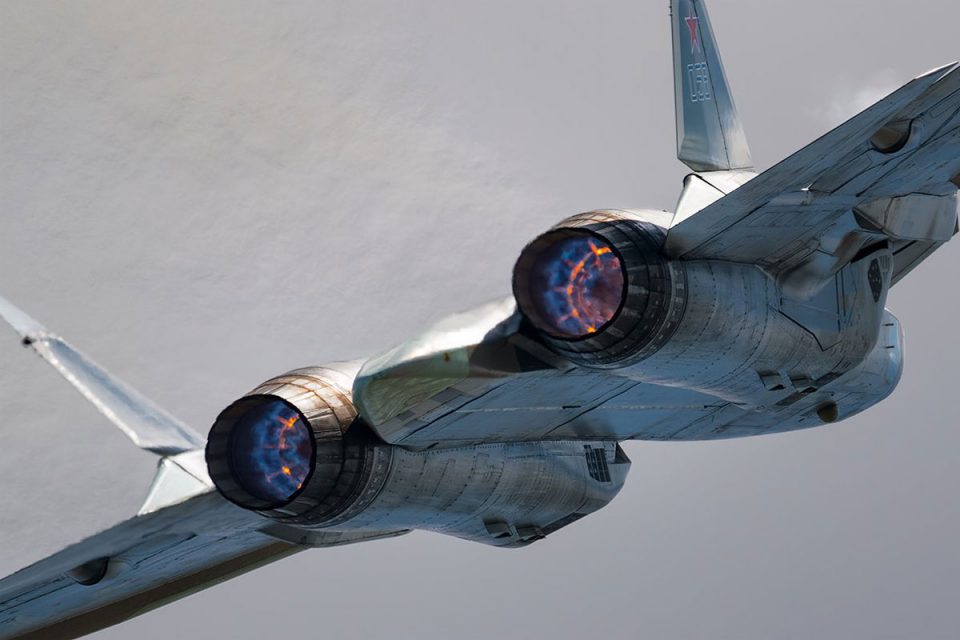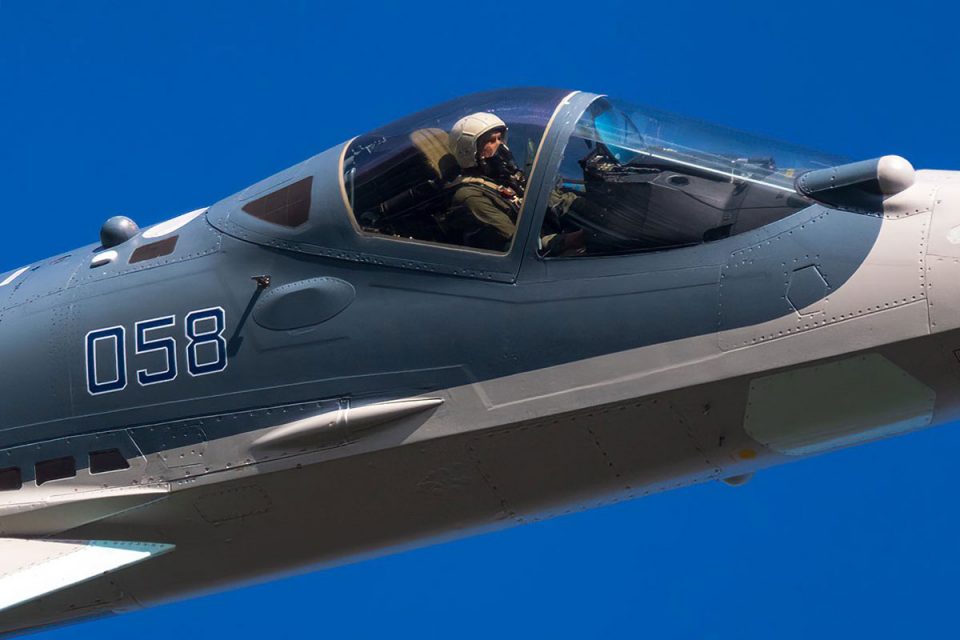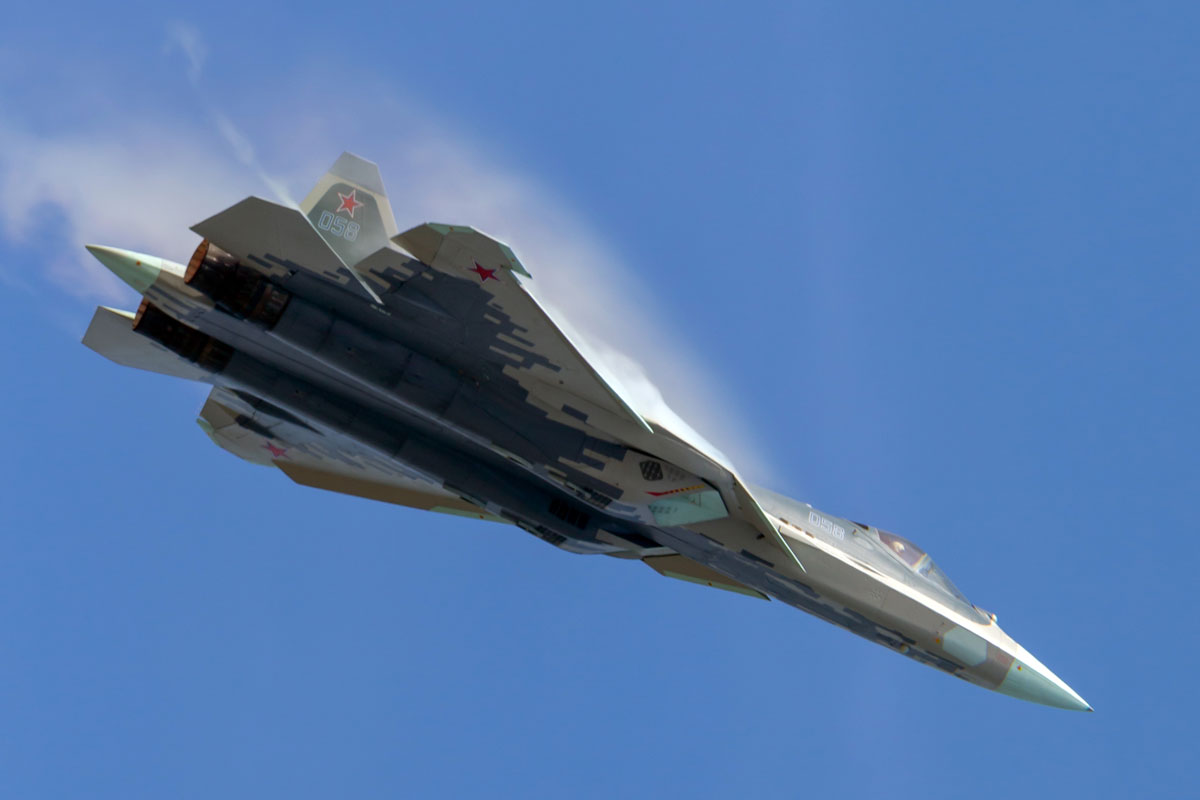Considered by Russia a 5th generation fighter as or more capable than similar models of the US Air Force, the Sukhoi Su-57 will have the first serial production unit delivered in December, revealed the TASS agency.
According to a source, the plan is to deliver four more fighters to the Russian Air Force in 2021, all with the old Izdeliye 30 engine. From 2022, the batches will have a production rate of 15 units per year and be equipped with the new turbofan AL-41F. “As a result, the contract signed in 2019 on 76 Su-57s through 2028 will definitely be fulfilled on time,” the source explained.
The Russian Air Force currently operates 10 pre-production Su-57 fighters that have taken part in missions in Syria. But the optimism of the Russian government is not echoed in the West.
In October, the renowned Royal United Services Institute for Defense and Security Studies (RUSI) published a report that analyzes the airpower of Russia and China. According to analyst Justin Bronk, the Su-57 is a major advance over the ‘Flanker’ family, but “is not a direct competitor to the US F-22 (or Chinese J-20) as a VLO (Very Low Observable) air superiority machine.”
According to Bronk, the ‘Felon’ (codename NATO) is “a hybrid design which incorporates features of the American F-22 and the Su-27/35 Flanker family “. As a result, it has a cross radar section (RCS) larger than the F-35 (a smaller fighter) and many times superior to the Raptor.

Low budget
“Notable sources of radar reflections include the unusual fully moving leading-edge root extension (LERX) control surfaces and actuators, cockpit canopy design, ram air intakes at the base of the canted vertical stabilizers, IRST sensor in front of the canopy and the only partially shrouded jet engine turbine faces. The latter is due to the ‘flattened Flanker’ blended wing-body shape, coupled with two large central weapons bays between the intake trunks, leaving insufficient space for a full ‘s-curve’ to hide the turbine faces as used on the F- 22. These features are likely a result of comparative Russian inexperience in designing and building stealth aircraft, coupled with budgetary limitations,” he wrote in his report.
While recognizing advances in avionics, RUSI’s analysis points out that the Russian industry lacks micro-electronics components due to sanctions from the West. The reflection is that there are doubts as to whether the Su-57 is capable of using its AESA radar efficiently and also not being detected by other enemy aircraft.
Bronk also questions the low budget announced by the government of Vladimir Putin, who said that the 76 new fighters will cost about $ 2.63 billion, something like $ 34 million per aircraft. The value “is likely to only cover an initial tranche – with the remainder of the 76 having to compete for stretched funding within the overall Russian military modernization budget.”
RUSI concludes the analysis considering that Russia may be able to improve the Sukhoi Su-57 during the decade, but that budget constraints prevent the fighter from playing as important a role as the countless Flankers currently in operation.


